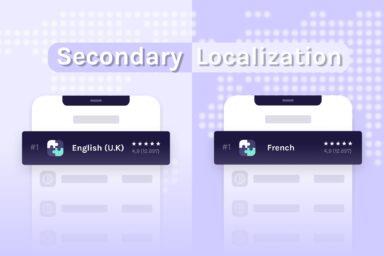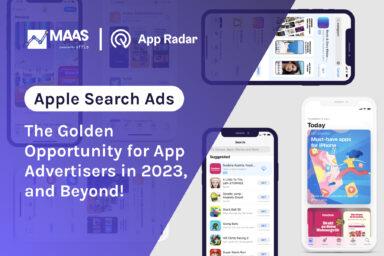What are Mobile Ad Networks?
Mobile ad networks provide platforms for app developers looking to either monetize or grow their apps. These networks are at their foundation a sell and buy marketplace for ad spots.

App developers benefit from buying mobile ad spots. The target audience is already on mobile. So ad viewers don’t have to switch mediums in order to install a new app. Cross-promotion is another lucrative way to get users to flow in between apps within your portfolio. We’ll be covering this a little later on.
On the other hand, monetization seems to be the end goal to everything these days. The app industry is no exception. Many app developers have had success, whether it be with casual games, e-commerce channels, daily planners or fitness trackers.
Although, the big question circulating within the app industry is how to actually make money with a successful app. It’s well known that putting up a paywall right at the beginning can be detrimental. Users don’t want to put down that initial financial investment, regardless how small, for an app they haven’t yet tested out.
Because of this other monetization models have become popular. In-app purchases, freemium models and what we’re going to discuss today, in-app ads are all widely practiced app monetization strategies.
Monetizing Apps with Mobile Ad Networks
How do you monetize your app with ads? The answer is mobile ad networks. Mobile ad networks are platforms where app developers, called publishers, can sell ad space and marketers, called advertisers, can buy ad space. Whether you’re looking to monetize your app by selling ad space or increasing user acquisition by buying ad space, you’ll want to sign up for a mobile ad network.

There are various types of mobile ad networks. The best of the best ensure fair rates, high eCPMS, targeted audience, quality ad graphics and more. Choosing a mobile ad network is a choice subjective to your and your brand. Find out which networks have a large audience in your target region, have capabilities you need, or offer mediation platforms when that’s something you’re interested in. To help narrow things down we’ve already put together a list of the best mobile ad networks for 2019.
Who are Mobile Ad Publishers?
Publishers, as stated above, are app developers. You’re a publisher if you’re looking to monetize your app by allowing advertisers to place ads within your app. In-app adds come in all shapes and sizes. Common in-app ads for mobile games include offer walls, playable ads and rewarded video ads. If you have no clue what I’m talking about, take a breath. We’re going to go over all ad formats at the end of this post.
Mobile ad networks that cater to publishers are supply side platforms (SSP).
The metric that most publishers concern themselves with is eCPM, standing for effective cost per mille. And because that’s still pretty much ad industry jargon let me clarify. eCPM is simply the ad revenue generated per 1,000 ad impressions. An ad impression means the ad was shown to a user.

Source: Statista
Who are Mobile Ad Advertisers?
Advertisers, as stated above, are marketers looking to acquire new users and customers. You’re an advertiser if you’re looking to place ads within other people’s apps.
Mobile ad networks that cater to advertisers are demand side platforms (DSP).
The metric that most advertisers concern themselves with is ROAS, standing for return on ad spend. Calculate ROAS by dividing the amount of revenue generated by an ad campaign with the amount spent on that ad campaign
Why even advertise within apps?
There’s a plethora of reasons. First off, the world has become a mobile economy. According to GSMA 5.1 billion people or 67% of the world population will have subscribed to mobile services by the end of 2018. Further, 60% of the global population own smartphones. That’s more than half of the world that is using mobile apps on a daily basis. You’ve got to reach your audience where they are and that is undoubtedly on mobile.
If you’re a bigger app developer with more than a few apps in your portfolio, then cross-promo mobile ads will be of interest to you.


What are Cross-Promo Mobile Ads?
Cross-promotion ads are in-app ads that direct current users of one of your apps to another app in your portfolio. This method of in-app marketing is great for mobile game developers that produce a similar line of games across different designs. It can also work quite well for fitness based apps that have a collection of workout targeted and nutrition apps. Mobile ad networks enable you to place these types of mobile ads within your apps.
Mobile Ad Mediation Platforms
In addition to single SSP or DSP, there’s also mediation platforms.
Mobile ad mediation is meant to increase revenue while decreasing effort for mobile ad publishers. It’s the way for app developers to access multiple mobile ad networks with the integration of a single SDK. These mediation platforms, such as the ones offered by Digitalturbine, Ironsource, Inmobi and Smaato, are then a self-service software coupled with added agency support.
Mediation works like this. Instead of you searching through all the mobile ad networks trying to find the placements that will bring your the highest eCPMs, the software does it for you. It can also use a combination of ad buying methods. These include waterfall model, direct deals, cross-promo, and DSPs.
Mobile Ad Formats
Now that we’ve covered what mobile ad networks are, the difference between a publisher and an advertiser and what mediation is, let’s take a look at which ad formats are available to you as an app developer.
Mobile ads come in all shapes and sizes. Well those that would fit on a smartphone anyways. Technology has made some exciting advancement in terms of mobile app advertising. Though there still exists the traditional banner ads, app users today can play their way through an ad or even use it to interact with the real world. Exciting times I’d have to say.
Mobile app ads can direct a user to the following destinations:
- website
- app product page
- expanded ad
- deep link to specific location
Banner
Banner ads are rectangular image, graphic or text ads that inhabits a spot within an app’s UI. These ads are shown to users as they are interacting with the app. Like many web browser banner ads, mobile banner ads can also be refreshed after a certain amount of time.
Banner ads are the simplest mobile ad formats. They can be formatted as standard banner, MREC or square.


Video
Video ads are utilized to truly capture a user’s attention. That’s because video is much more captivating than a simply graphic or some text. It’s a great way to stop a user from scrolling and to pay attention for a few seconds or more. They’re so effective because they can be used to tell a thrilling story, connect with a user on a deeper level, offer a sneak peak into a product or service and more.


Native
Native ads fit seamlessly into an app’s UI. The ad looks no different from other posts within the app except for usually a small signifier. Native ads may be easily passed by considering their camouflaged nature. However, they work great when you don’t want to disrupt a user’s engagement. Since native ads blend so nicely into the existing app interface they can actually enhance a user’s in-app experience rather than disturb it.

Interstitial
Interstitial ads are full-screen ads. A user would have to complete a task, wait out a time limit, or press exit to close the ad. Interstitial ads fit perfectly in a natural pause. For example, before a player moves on to the next level or before the next song plays. But be careful not to go overboard with these. Too many interstitial interruptions put your app at risk of user frustration and thus, attrition.
On the plus side, when implemented optimally, interstitial ads work really well. This is due to the variety of ad types an app developer can put into place. Consider playing with full-screen video, 360 video, interactive with shake and vibrate, playable game previews, AR for real life integration and offer wall to convert in freemium models.

Rewarded Video
Another interstitial ad that adds to a user’s in-app experience rather than takes away is rewarded video. There’s a clear value exchange. The ad gets impressions and the users receive extra credit, coins, lives, or other in-app rewards that are valuable to the user. Although this model has been in the past primarily implemented by mobile games, it’s now slowly moving into other app niches as well.
In the example below, Spotify listeners earn 30 minutes of ad-free music after they opt in to watch the video ad.

Which Mobile Ad Network is Right For You
The decision to join a mobile ad network has to stem from you and your app. First, evaluate whether or not you’d like to monetize, reel in new users, or both. From there take a close look at your app’s niche and functionalities.
Then, think about which elements within your app are the most persuasive as a result are the app’s unique selling points. Is your app a mobile game or a fitness tracker? An app’s niche highly affects the ad formats that will work well and be nonintrusive to your users.
After you’ve picked through your own app, you can shop around and see which mobile ad network has everything that you need. Our top 2019 mobile ad networks list include publisher focused, advertiser focused and mobile game focused networks.
Remember that the choice is subjective and it may take a few trial runs plus optimization to get it just right.
Need Help Growing Your Apps?
Get in touch with our app marketing growth team to discuss the right solutions for your mobile app business
Latest Posts


